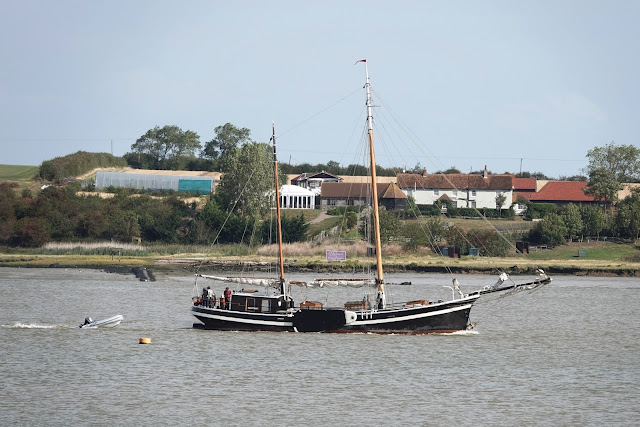Sam phoned yesterday evening and asked if I fancied a potter
out today so we met at mine at 830 and headed east to Oare Marshes in glorious
sunshine and without a breath of wind. I
was grateful of the lack of breeze but was hoping that the early morning cloud
would prevail a little longer.
As we came through Ospringe I remembered a post some months
ago about Common Wall Lizards on the church so I paused to find it and within a
couple of minutes we were parked outside this delightful building.
The sun was on several parts of the main church so we slowly
walked around and checked sunny gravestones in the process but had no joy. Sam found a Hummingbird Hawkmoth perched up on a window
before it careened off once again and Badgers had been very active in several
spots.
 |
| Hummingbird Hawkmoth- Sam Shippey |
 |
| Wall Rue |
 |
| Cedar - not sure which species |
We were almost back to the car when I spied a young Wall Lizard, well,
on top of the wall. It posed briefly before flipping over the top. We walked
around the other side and found a second, more olive toned juvenile sunning itself.
 |
| Wall Lizard |
 |
| juvenile Wall Lizard |
 |
| juvenile Wall Lizard |
Pleased that we had succeeded we made to leave when Sam
found a huge male basking on the stone newel post. He seemed a good couple of inches longer than
any Viviporous Lizard with a long, almost spotty face and snaky dorsal stripe. On
closer inspection you could see several blue spots on the visible sides of his
belly.
 |
| male Wall Lizard |
We watched him trying to catch flies before slipping out of
view. I had only ever seen them briefly
at Portland before so this was a great start to the morning.
On to Oare where the East Flood was incredibly low but had a
good splodge of waders in the middle in the grotty sunlight so we parked up at
the end by the spring and decided to head around clockwise from there.
Two fawn Wheatears around the KWT building were a good start
and Yellow Wagtails were zipping over and once up on the seawall a juvenile
Curlew Sandpiper became almost the first wader that we saw as it snoozed with a
Ringed Plover down on the mud. The light
was pants for gull chcecking so we ambled along and on the first scan back I
picked up Napoleon as he plodded around picking up tiny worms from the sloppy
mud with his Black-headed Gull buddies.
He was now in full winter plumage but still cuts a dapper little shape
with his neat black bill, short pinky legs and big fat cheek spot.
 |
| Bonaparte's Gull |
A Spitfire roared
over with shark teeth mouth eating up the sky and Bearded Tits and Cetti’s
Warblers called from the reeds while flocks of patchwork Starlings raided the
Bramble clumps.
Down at Faversham Creek over 300 Redshank fed on both sides
on the appearing mud with singles of Ruff and Dunlin amongst them. A Little Egret
was stalking fishlets in the shallows.
 |
| Little Egret |
The sunshine was slowly not becoming a problem with a
quickening breeze and bubbling cloud and the light was fine by the time we got
to look at the Black-tailed Godwit flock.
Given how far the tide had dropped it was a little surprising that so
many were still on the flood. Twenty-six Avocets, six Ruff, 30 Dunlin and 22
peachy Knot were amongst them and 13 Golden Plover and three Snipe were closer
to the road.
Yellow and Pied Wagtails scurried around after flies on the
dried up pool surface and Linnet and House Sparrows were around the edges.
 |
| A resuced Fox Moth cat from the path |
An immature Peregrine made to sorties but surprisingly did
not spook the Godwits and only the 80 Lapwing took to the air which was foolish
of them and four Buzzards hovered over the Nagden Marshes with another standing
sentinel on top of a dead tree out towards the West Flood.
 |
| Peregrine |
 |
| Buzzard |
While scanning that way we picked up three Whinchats feeding
from the small hawthorns and brambles with a few Whitethroats and a single
Lesser Whitethroat for company. I was beginning to wonder if I would actually
see one this autumn.
 |
| Whinchat and a Whitethroat - honest! |
I showed them to a very nice lady out taking pictures but
could not find the Wheatears for her upon our return to the car. Lunch was taken sitting on the slipway watching a
Yellow-legged Gull and some BHGs and reminiscing on past times...
The clouds were now looking rather ominous so we headed for
home.



















































